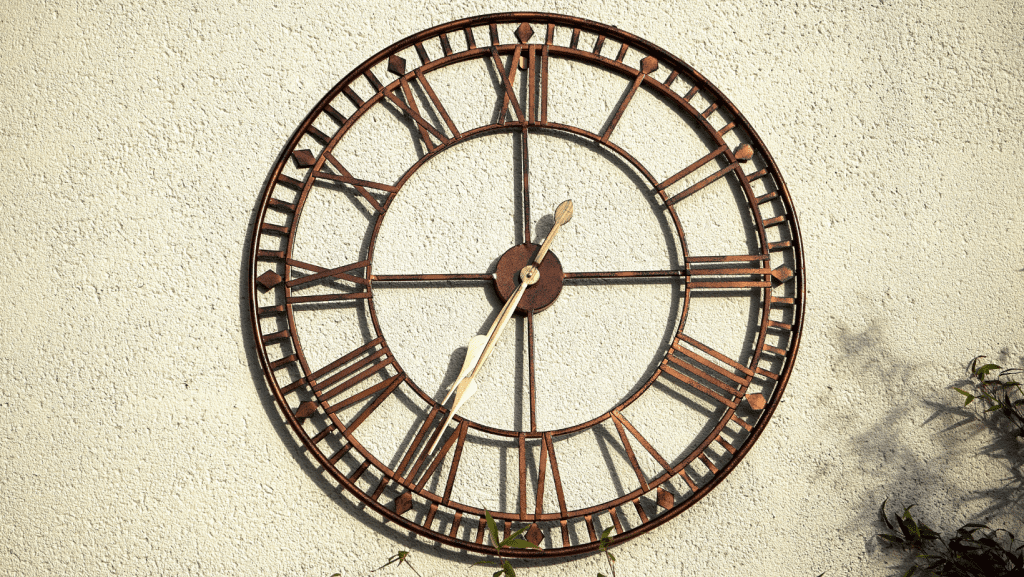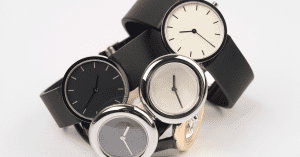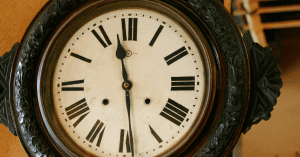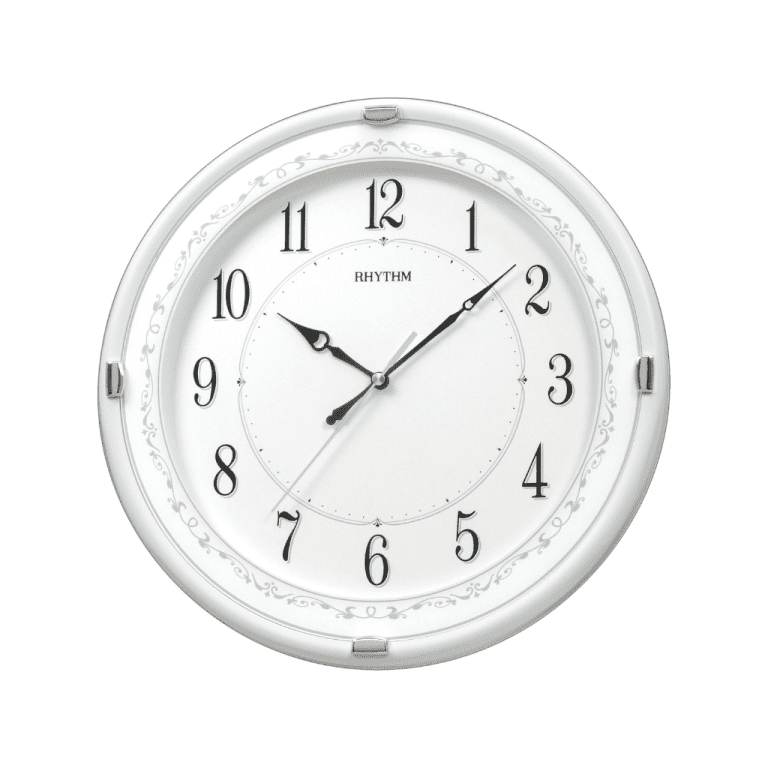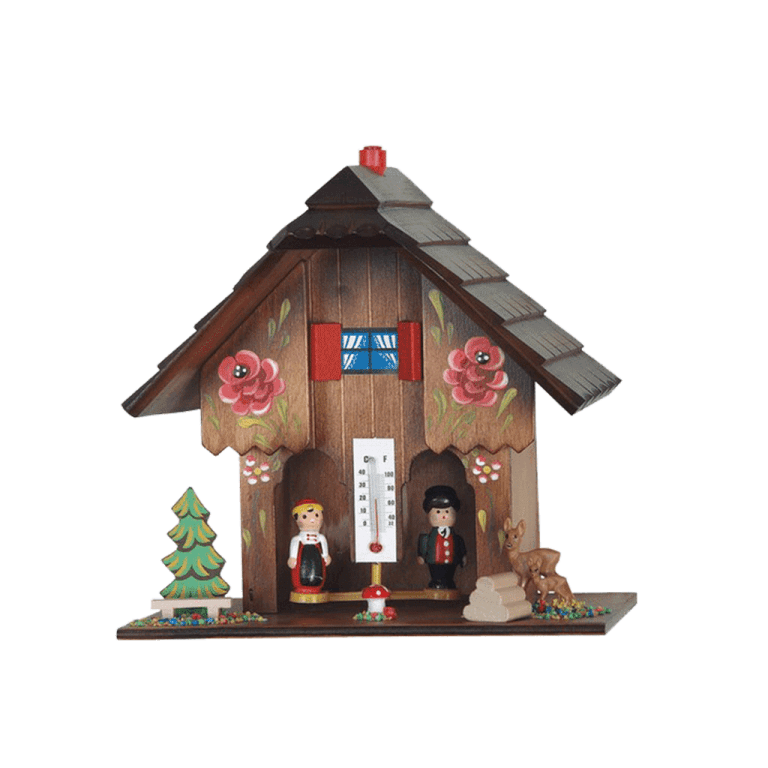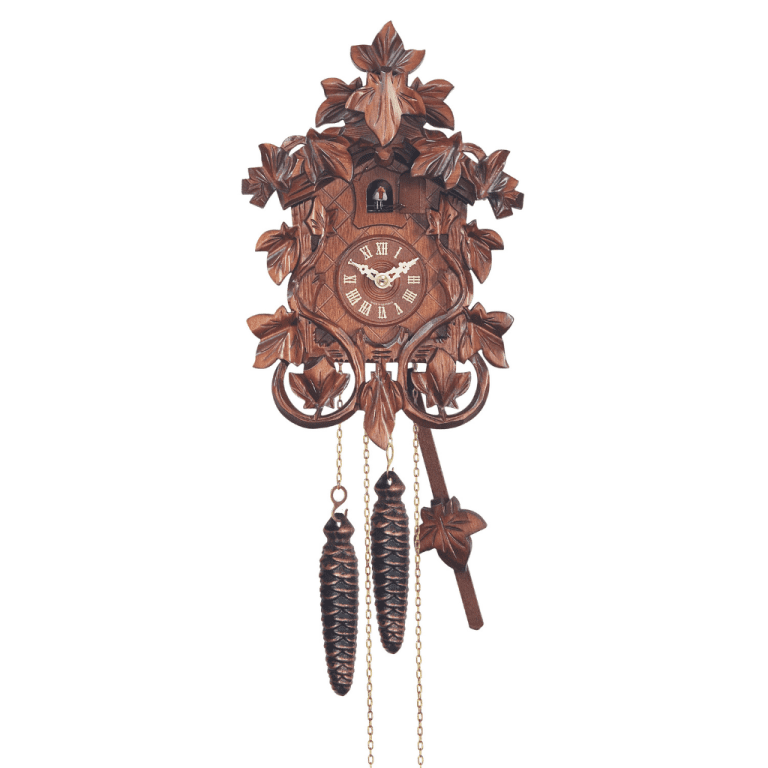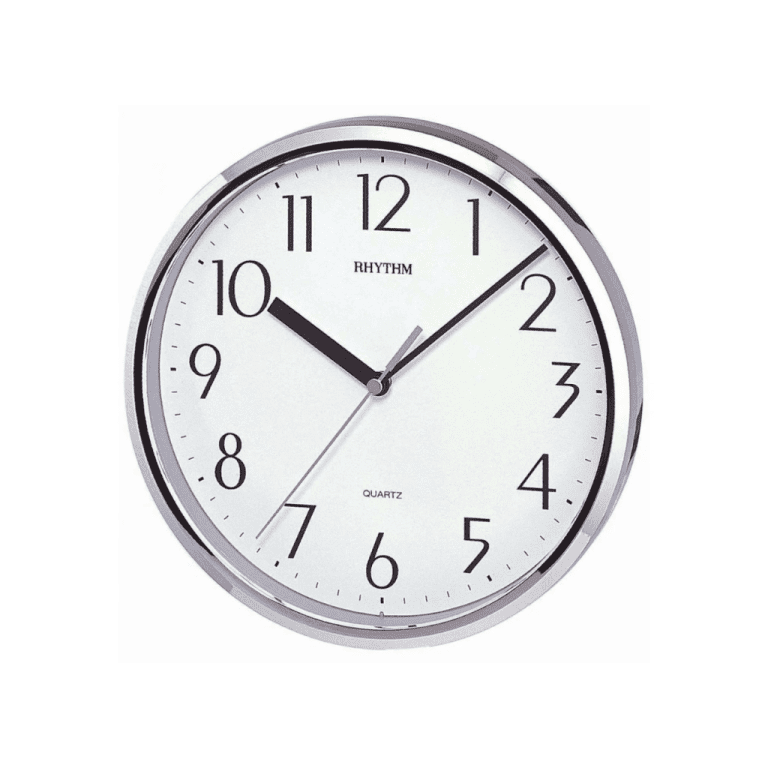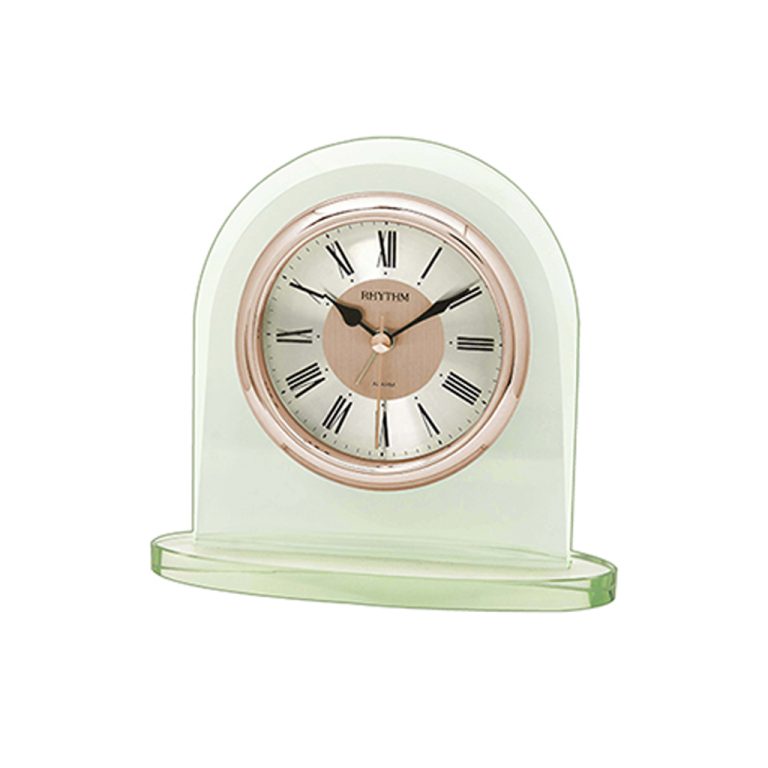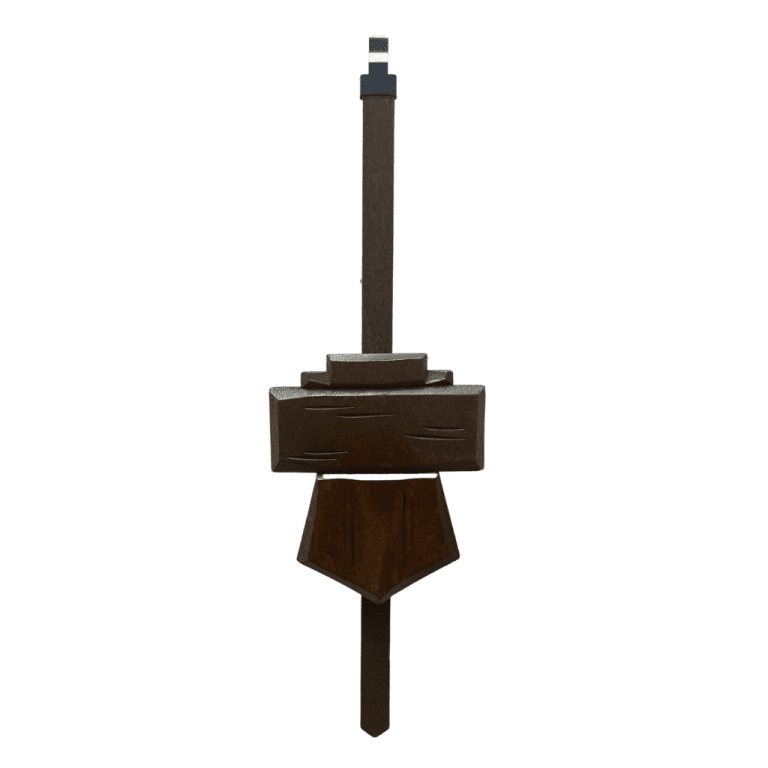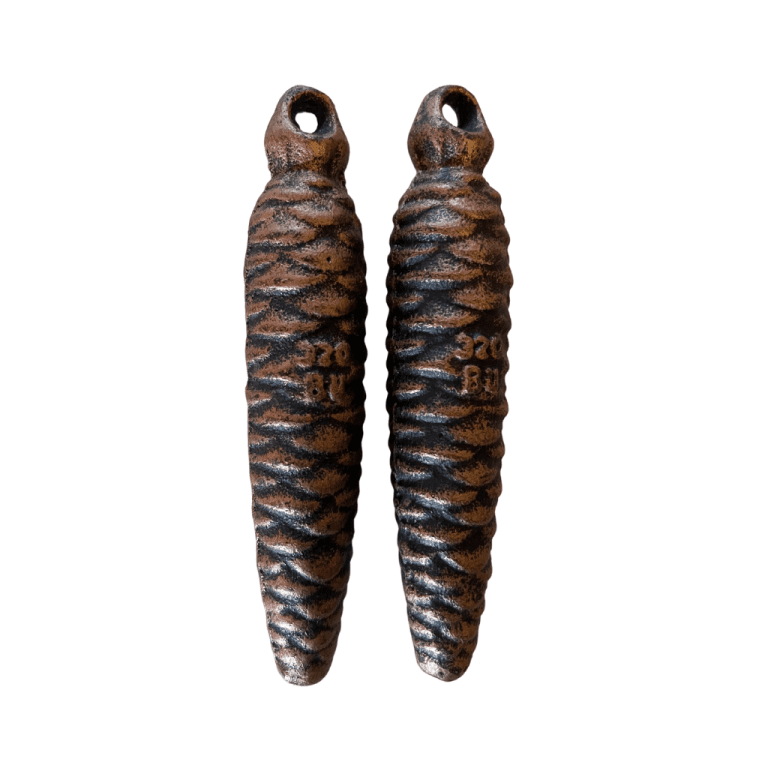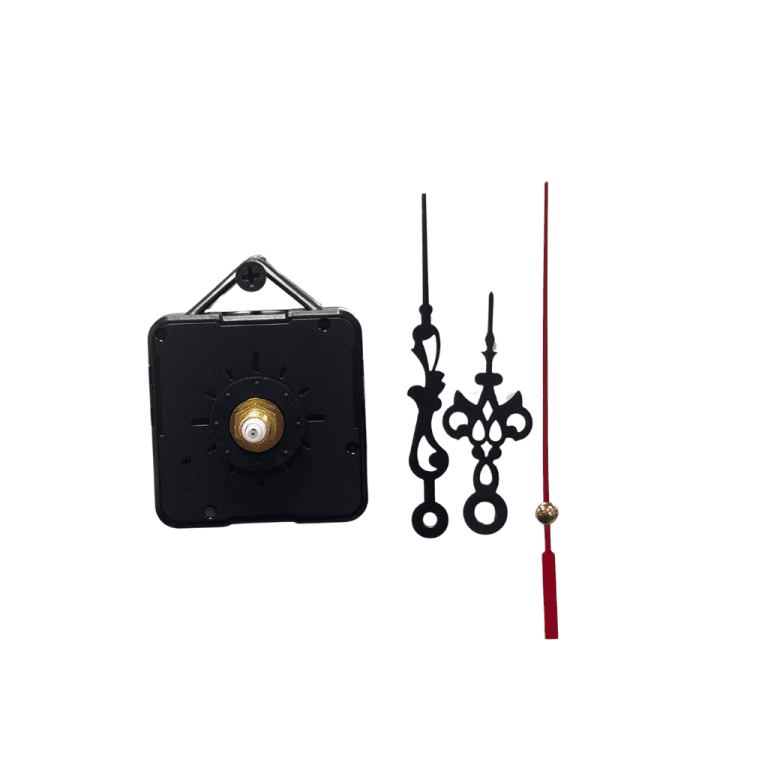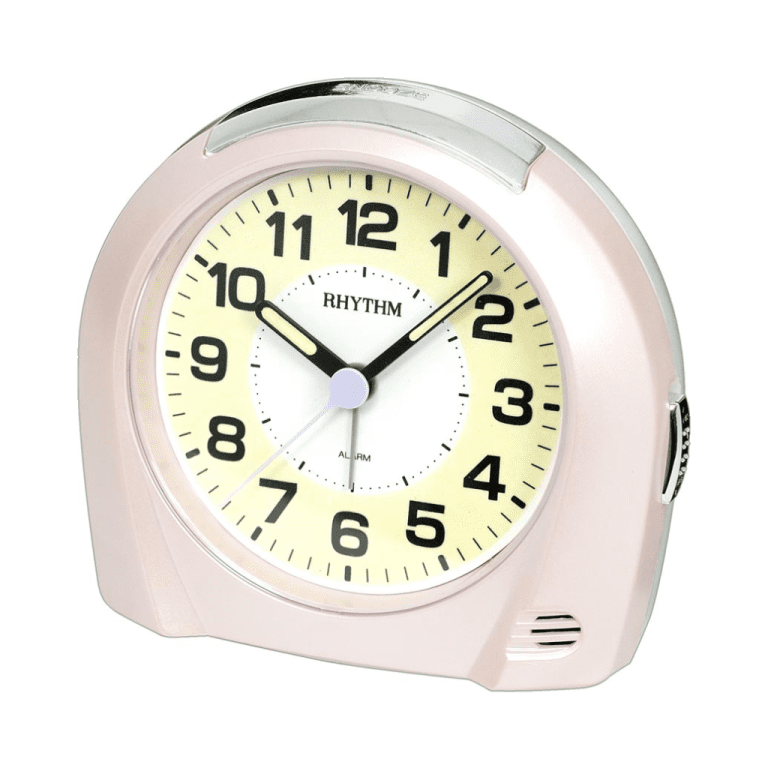A wall clock is a wonderful addition to any home. Sometimes it can be hard filling up empty wall space, especially when redecorating or when you’ve just moved into a new home.
However, a wall clock is a functional choice that can also serve as a decorative accent piece or a bolder, statement piece – check out seven expert tips below for choosing the perfect wall clock for your space.
How big should a wall clock be?
The ideal size of your wall clocks depends on whether you’d like it to serve as a delicate accent piece within your overall décor or if you want your wall clock to serve more as a statement piece that takes center stage. Wall clocks range between 10-inches and 30-inches on average.
- For a delicate accent, choose a small or medium-sized wall clock, something within the 10-inch to 18-inch range. A refined design can add a pop of color or offer glittering appeal that doesn’t overpower your other design elements.
- For a statement piece, move into a larger size, something like 24 inches or 30 inches. Choose an eye-catching textured pattern, like an intricately carved wooden frame or a bright, hand-painted metal frame so it really pops.
How to choose the right wall clock style?
Once you start shopping for a wall clock, you’ll quickly notice they’re available in a multitude of styles.
- If you have a modern interior décor, choose a wall clock that features metallic frames accented with color. Elaborate details spread throughout the face of the clock complete this look. In fact, this wall clock style also complements industrial environments well.
- When your environment is more traditional or minimalistic, a wall clock that incorporates Roman numerals as the hour symbols does well with heightening your environment’s overall design.
What materials are wall clocks made of?
- Plastic
Plastic is the most budget-friendly material. Thin plastic will be the cheapest while thicker options will be priced slightly higher. Plastic comes in a variety of colors which makes it easy to match any interior design style, but it does not last as long as other materials, like wood and metal.
- Wood
Wood looks amazing in rustic and farmhouse environments. You can find wall clocks made of common pine, eucalyptus, and even mahogany if you like a richer finish. Wood is heavy so be sure you have a sturdy wall space and some muscle on hand when hanging a wooden wall clock.
- Metal
Metal wall clocks complement minimalist and industrial environments very well. Polished metal will look great with more refined decor, like those seen within glam and shabby chic atmospheres.
How to choose the right color for a wall clock?
A great rule of thumb when deciding on your perfect wall clock is ensuring the color contrasts against the color of the wall you’ll be hanging it on. If you have traditional white walls, choose dark, bold colors. If you have an accent wall with a bold color, choose a lighter-colored wall clock. To create a more cohesive appearance within the room, make sure the lighter or darker color you choose matches an existing color within the room. Pull out a dark or light color from the area rug, for example, or match the wall clock to a set of accent pillows.
What are some different types of wall clocks?
- Mechanical clocks.
Mechanical clocks require periodic winding – sometimes every 14 days or every 7 days. Because of this requirement for external input, these types of clocks tend to be less accurate. However, if you enjoy traditional design elements, a mechanical clock is worth the extra care.
- Quartz wall clocks.
Quartz clocks are more accurate than mechanical clocks because they are equipped with a crystal oscillator that creates precise frequency signals. You can use batteries with these clocks – they generally last about a year. This is a great low maintenance option that offers supreme accuracy.
- Atomic wall clocks.
Atomic wall clocks are extremely accurate – they are regulated by vibrations of atomic systems. They self-adjust, even with Daylight Savings Time, providing you with a trusted time-telling resource you can set and forget.
Where to put a wall clock in the living room?
The living room is the most common and appropriate place to display a wall clock. The best place to hang your wall clock is above the center of your largest piece of furniture. In most homes, this is a long sofa. Another common location for wall clock placement is above your entertainment console, generally placed across the room from your sofa.
How to safely hang a heavy wall clock?
When you choose a large statement piece wall clock or a wooden framed clock, you’ll need to make sure you hang it correctly to avoid any safety issues. Not only do you want to prevent damage to your wall, you also want to prevent the possibility of the wall clock slipping, falling, and hurting a member of your household. The most important key to remember when hanging your wall clock is ensuring you have enough support on your chosen wall. Follow the steps below to keep your new wall clock securely in place:
- Use a stud finder to locate the support beams behind the drywall.
- Mark the location so you know where to secure the screw.
- Secure the screw in place with a power drill. Use more than one for added safety.
- Hang your clock and enjoy it, knowing you employed the right security measures.
Credited to: https://visualhunt.com/

